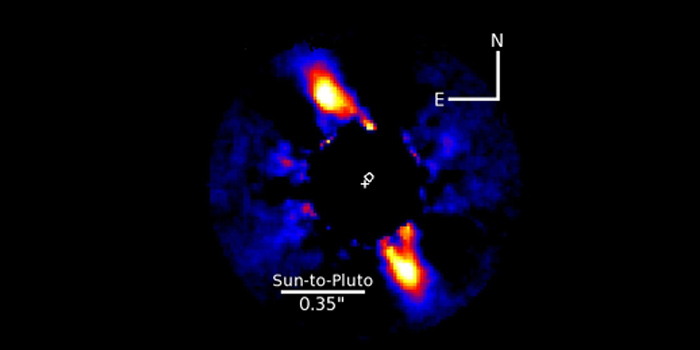An international team of astronomers has discovered a young solar system which closely resembles ours and it features a Sun-like star at its center. The images derived using the Subaru Telescope and the Gemini South Telescope, show the the star (officially called HD 115600) surrounded by a disk of debris which may be shaped by at least one planet. The ring appears to be the same size as the Edgeworth-Kuiper Belt in our solar system and could be made up of dust, ice and silicates.
The detection of this young planetary system was possible thanks to the Gemini Planet Imager (GPI), an instrument designed to detect planets and Kuiper Belt-like disks more efficiently. The disk of debris around the Sun-like star displays an eccentric shape, meaning it’s not perfectly circular. The astronomers involved in the discovery seem very confident about the theory that a massive planet must be causing the contortion owing to its gravitational pull.

Accordingly, a planet like Saturn, Jupiter, Uranus or Neptune is reportedly orbiting HD 115600. The Kuiper Belt plays host to a number of icy dwarf planets including Pluto, Haumea and Makemake, and contains clues to what our young solar system may have been like. By studying similar disks of debris surrounding Sun-like stars, astronomers might be able to understand the formation process. HD 115600 is a perfect candidate in this search for several reasons.
Kuiper belt-like rings of debris are usually seen to circle much bigger stars than the Sun, are located in sparse star-forming regions of the Galaxy, lie further away from the concerned star or don’t exhibit the scattered-light spectra required to observe them properly. The latest finding will be published under the title ‘Direct Imaging and Spectroscopy of a Young Extrasolar Kuiper Belt in the Nearest OB Association’, in the The Astrophysical Journal Letters.
Head astronomer of the study, Thayne Currie, has high hopes that the GPI and Subaru’s planet-hunting instrument called SCExAO, will point us to a new Earth in the future.
